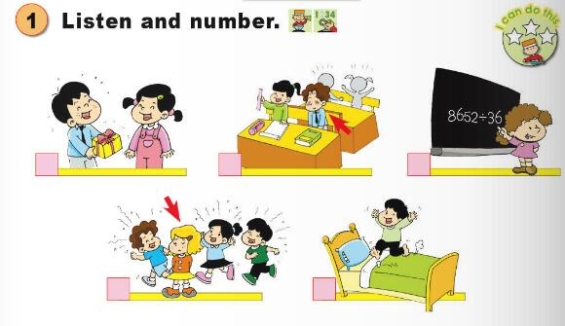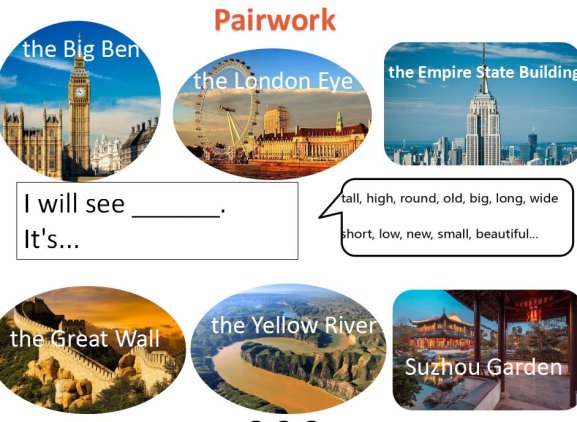

- 外研版(一年级起点)小学三年级英语下册 Module 10 Unit 1 Were you on the second floor? 课件1 课件 0 次下载
- 外研版(一年级起点)小学三年级英语下册 Module 10 Unit 1 Were you on the second floor? 教案1 教案 0 次下载
- 外研版(一年级起点)小学三年级英语下册 Review Module Unit 2 课件 课件 0 次下载
- 外研版(一年级起点)小学三年级英语下册 Review Module Unit 1 课件1 课件 0 次下载
- 外研版(一年级起点)小学三年级英语下册 Review Module Unit 2 教案 教案 0 次下载
英语外研版 (一年级起点)Review ModuleUnit 1 Will you go swimming?教案
展开Review Module Unit 1 (Book 6)
I. Teaching Aims:
1. Kids can master more adjectives about characters and buildings.
2. Kids can understand and try to use future tense to talk about activities.
3. Kids can make a simple summer holiday plan by using future tense and adjectives to talk about the places they will visit and the people they will go with.
II. Teaching Focus:
1. Review adjectives about characters.
nice, clever, helpful, good, cute, quiet, shy, naughty, lazy, bad
- Review adjectives about buildings.
tall, high, round, old, big, long, wide, short, low, new, small, beautiful
- Review future tense.
III. Teaching Difficulties:
- Kids can understand and use positive, negative, question forms of the future tense correctly.
- Kids can make a summer holiday plan by using future tense.
IV. Teaching Methods:
Task-based Approach, TPR
V. Teaching Aids:
Blackboard, a CD-ROM, word cards, audios, videos, worksheets, media-player...
VI. Teaching Procedures:
Step 1 Warmer
Sing and act: Solomon Grundy
Step 2 Review adjectives of characters.
1. Review the charterers of the children in our textbook.
2. Tip 1 for children:How do we describe a person in the general ?
3. Ss have a brainstorming
advantages:nice, clever, helpful, good, cute, lovely, smart...
disadvantages: quiet, shy, naughty, lazy, loud, bad...
4.Listen to an audio and number the children on Ss’ worksheets.

Step 2 Review adjectives of buildings.
- Review the buildings in London in our textbook.
- Tip 2 for children: What words can we use to describe a building or places?
tall, high, round, old, big, long, wide, short, low, new, small, beautiful...
- Pair-work to talk about the places Ss want to go and give simple reasons.

Step 3 Review the future tense.
- Review the positive and negative forms with the plans of Amy, Sam and Daming.
- Tip3 for children: the use of “will” and “won’t”.
- Read Fangfang’s plan, circle “will” and “won’t”, then draw “√” or “×” on the worksheet.

- Review the question form and the answer form of the future tense according to Fangfang’s plan in the above reading passage.
- Tip 4 for children:
To ask somebody’s plan—— Will you ... ?
To answer other’s question about your plan——Yes, I will. / No, I won’t.
- Listen and judge Miss Huang’s plan with the help of Tip 4.

- Make a survey in group of 4 about students’ summer holiday plan and then make a report.

Step 4 Finish the task
- T gives an example.
- Ss write on the worksheet.

- Ss share their plans.
- T gives Ss best wishes for their holiday.
Homework
1. Finish the plan and share with friends or family members.
2. Finish off Ex of AB P51-P52.
3. Finish the online homework.
外研版 (一年级起点)六年级下册Unit 1教案设计: 这是一份外研版 (一年级起点)六年级下册Unit 1教案设计,共2页。教案主要包含了教学目标,教学重难点,教学设计,教学过程,教学反思等内容,欢迎下载使用。
英语Review ModuleUnit 1教案: 这是一份英语Review ModuleUnit 1教案,共3页。教案主要包含了教学目标,教学重难点,教学设计,教学过程,教学反思等内容,欢迎下载使用。
小学英语外研版 (一年级起点)四年级下册Unit 1教学设计: 这是一份小学英语外研版 (一年级起点)四年级下册Unit 1教学设计,共2页。教案主要包含了学习目标,学习重难点,学习过程等内容,欢迎下载使用。















